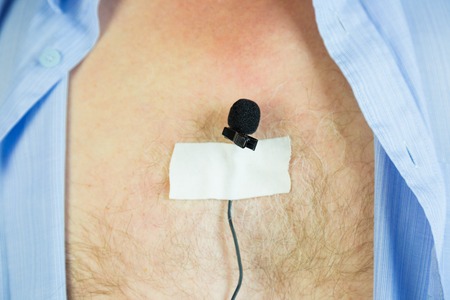Introduction to Beard Grooming Trends in the UK
In recent years, beard grooming has taken on renewed importance for British men, reflecting both personal style and deeper cultural traditions. Across the UK, facial hair is more than a fleeting fashion statement; it has become a symbol of masculinity, individuality, and even professional image. From the classic full beard to meticulously shaped lines and stubble, British men are embracing diverse grooming practices that cater to their unique preferences. The resurgence of traditional barbering services alongside innovative grooming technologies demonstrates how maintaining facial hair has evolved into a key aspect of modern British identity. With this ongoing shift, many are now weighing the benefits of contemporary solutions like laser beard shaping against time-honoured techniques such as shaving, trimming, and waxing. This exploration highlights not only the practicality of different methods but also their place within the wider context of UK culture and current grooming trends.
2. Traditional Methods of Beard Shaping
Traditional beard shaping methods remain a cornerstone of British male grooming, reflecting both practicality and cultural heritage. These conventional techniques, including shaving, trimming, and professional barbering, have stood the test of time for their accessibility and versatility.
Shaving
Shaving is arguably the most common method among British men for maintaining clean lines or achieving a fully smooth face. Utilising razors—be it disposable, cartridge, or safety razors—shaving offers immediate results and can be easily integrated into daily routines. However, it often requires frequent upkeep due to rapid hair regrowth.
Trimming
Beard trimmers and scissors are essential tools for those seeking to maintain a particular length or style without going completely clean-shaven. Trimming allows for controlled shaping along the cheeks, neckline, and moustache area. Many British men use trimmers at home as part of their weekly grooming habits, ensuring a tidy appearance while retaining facial hairs natural texture.
Barbering
Professional barbering remains a valued tradition in the UK. Visiting a local barber provides access to expert shaping, blending, and styling tailored to individual preferences and face shapes. Barbers often use straight razors for precise definition and offer advice on maintaining a polished look between appointments. This social experience is also an integral part of British culture, fostering community and trust.
Comparison Table: Key Features of Traditional Beard Grooming Methods
| Method | Main Tools | Frequency Needed | Level of Skill Required | Cultural Significance |
|---|---|---|---|---|
| Shaving | Razor, Shaving Cream | Daily to Every Other Day | Low to Moderate | Routine Personal Care |
| Trimming | Beard Trimmer, Scissors | Weekly | Moderate | Casual Maintenance at Home |
| Barbering | Straight Razor, Clippers, Scissors | Every 2–4 Weeks | High (Professional) | Heritage & Community Tradition |
The reliance on these traditional methods is not merely about functionality but also about the ritualistic nature of grooming in Britain. Whether performed at home or entrusted to skilled barbers, each technique plays a distinct role in the daily and social lives of British men.

3. Laser Beard Shaping: An Innovative Approach
Laser beard shaping represents a cutting-edge solution for British men seeking precision and longevity in their grooming routines. This technology utilises targeted laser energy to selectively remove unwanted facial hair, allowing for the creation of sharp, symmetrical beard lines that are difficult to achieve consistently with traditional methods. The process typically involves several sessions, during which a specialist uses medical-grade lasers to gradually reduce hair density along the desired contours of the beard. This approach not only minimises daily maintenance but also reduces the risk of common issues such as razor burn and ingrown hairs.
Within the UK, laser beard shaping has gained notable traction, particularly among men who value both efficiency and a polished appearance. Its popularity is on the rise in urban centres like London, Manchester, and Birmingham, where professional grooming services are in high demand. British men have increasingly embraced this treatment as part of a modern lifestyle that values convenience and lasting results. Clinics offering laser beard sculpting now cater specifically to male clientele, reflecting broader acceptance and normalisation of advanced aesthetic procedures among men across the country.
While laser beard shaping was once considered a luxury or niche service, its growing accessibility and competitive pricing have contributed to its widespread adoption. Many British men appreciate the time saved compared to daily shaving or frequent barber visits. Furthermore, there is an enhanced sense of confidence associated with having a consistently well-defined beard line—an aspect that resonates strongly with those navigating professional environments or social settings where first impressions matter.
4. Comparative Analysis: Results and Maintenance
When evaluating laser beard shaping versus traditional grooming methods, British men often consider both the quality of results and the ongoing maintenance required. Below is a direct comparison to highlight these key aspects, tailored to typical British preferences for convenience, style, and reliability.
| Laser Beard Shaping | Traditional Grooming (Razors, Trimmers, Barbers) | |
|---|---|---|
| Results | Delivers precise and symmetrical beard lines; long-lasting results with reduced hair regrowth; suitable for defining sharp or natural contours based on personal style | Immediate but temporary results; requires skill for symmetry and consistency; potential for nicks or uneven lines; reliant on personal technique or barber’s expertise |
| Maintenance Frequency | Minimal upkeep after initial sessions (usually 6-8 treatments); occasional touch-ups may be needed | Requires frequent attention—typically daily or every few days; regular trips to the barber for optimal shape |
| Skin Comfort | Reduces irritation over time as shaving frequency decreases; less risk of ingrown hairs post-treatment | May cause recurring irritation, razor burn, or ingrown hairs, especially with sensitive skin common in colder UK climates |
| Cultural Acceptance | Growing acceptance among modern British men valuing efficiency and a polished look; seen as innovative but still relatively niche | The traditional approach remains deeply rooted in British grooming culture, with visits to the local barber being a social ritual for many men |
| Cost Over Time | Higher upfront investment but lower ongoing costs due to reduced product use and fewer barber visits | Lower initial cost but accumulates over time through product purchases and regular professional grooming sessions |
Typical British Preferences: Weighing Tradition Against Innovation
Convenience vs Heritage
The shift towards laser beard shaping is appealing to those seeking long-term convenience and a consistently groomed appearance with minimal effort. However, many British men value the tradition of routine barber visits and the social aspect associated with classic grooming practices.
Aesthetic Outcomes and Personal Choice
Ultimately, the choice between laser beard shaping and traditional methods comes down to individual priorities—whether one prefers the modern efficiency and low maintenance of laser treatments or cherishes the craft and camaraderie of traditional grooming routines.
5. Cost Implications and Accessibility
When comparing laser beard shaping to traditional grooming methods, British men must consider the financial aspects, accessibility, and overall practicality of each option. Laser beard shaping, while offering long-lasting results, typically requires a significant initial investment. The price per session can vary widely depending on location and clinic reputation, with most men needing multiple sessions for optimal results. This upfront cost is notably higher than purchasing razors, trimmers, or visiting a local barber for regular maintenance.
Traditional grooming methods, such as shaving and trimming, are generally more accessible across the UK. Supermarkets, chemists, and high street shops stock a wide range of affordable grooming tools suitable for every budget. Additionally, barbershops—an enduring part of British culture—are readily available in both urban centres and rural towns, offering professional beard shaping at a manageable recurring cost.
However, when factoring in the cumulative expense of blades, creams, aftercare products, and frequent barber visits over several years, the difference in total expenditure between the two approaches may narrow. For those seeking convenience and time-saving solutions, laser treatments may become more appealing in the long run.
Accessibility is another important consideration. While traditional grooming tools are universally accessible, not all regions in the UK have clinics equipped to perform laser hair removal to a high standard. Men living outside major cities like London, Manchester, or Edinburgh may find it challenging to access reputable providers without significant travel.
In summary, while traditional methods remain highly practical and affordable for most British men, laser beard shaping is emerging as a viable alternative for those willing to invest upfront for lasting results and reduced daily maintenance. Each individual’s choice will ultimately depend on their budget, location, lifestyle preferences, and willingness to commit to either ongoing upkeep or a higher initial spend.
6. Cultural Perceptions and Lifestyle Considerations
When comparing laser beard shaping to traditional grooming methods, understanding the cultural context within the UK is essential. British men have long valued a well-groomed appearance, but preferences often reflect broader social trends, workplace expectations, and even class distinctions. The classic barber shave or trim remains a symbol of tradition and masculinity, with many men enjoying the ritualistic aspect of visiting their local barbershop for a wet shave or beard line-up. In contrast, laser beard shaping represents a modern, technology-driven approach that aligns with the fast-paced lifestyle of urban professionals who prioritise convenience and long-lasting results.
Fashion also plays a significant role in shaping grooming choices. The British fashion scene has always celebrated individuality, from the iconic mod look to contemporary tailored styles. As facial hair trends shift—from full beards to sharp stubble—men are increasingly seeking precise control over their appearance. Laser beard shaping offers this precision by creating clean lines that are difficult to achieve consistently with razors or trimmers. However, some purists may view traditional grooming as more authentic, appreciating the skill involved and the opportunity for self-expression through different shaving techniques.
Daily routines further influence the decision between these methods. With busy work schedules and active social lives, many British men seek solutions that save time without compromising on style. Laser treatments appeal to those looking for low-maintenance grooming, as they reduce the need for frequent touch-ups. Yet, others relish the daily ritual of shaving or trimming, finding it both meditative and integral to their self-care routine.
Ultimately, the choice between laser and traditional beard grooming reflects not just personal preference but also deeper cultural attitudes towards innovation, tradition, and self-presentation in British society.
7. Conclusion: Making the Right Choice for British Gents
In summary, when comparing laser beard shaping to traditional grooming methods, British men have a wealth of options at their disposal. Laser beard shaping offers long-term precision and can greatly reduce daily maintenance, making it ideal for those seeking a consistently sharp look with minimal effort. However, the upfront investment, commitment to multiple sessions, and considerations around skin type and hair colour are important factors not to be overlooked.
On the other hand, traditional methods—such as shaving, trimming, and using barbershop services—provide flexibility, immediate results, and a lower initial cost. These techniques also allow men to adapt their style more frequently in line with personal preferences or changing trends. Yet, they require ongoing time and effort and may sometimes lead to irritation or ingrown hairs if not performed properly.
For British gents weighing up these options, the right choice depends on individual priorities: convenience versus adaptability, budget versus long-term value, and lifestyle requirements. If you’re after a low-maintenance routine with lasting results and are comfortable with the higher upfront cost, laser beard shaping could be a game-changer. Conversely, if you enjoy regular grooming rituals or wish to experiment with your beard style as fashions shift across London and beyond, sticking with traditional methods might be more suitable.
Ultimately, whether you opt for high-tech precision or classic craftsmanship, understanding your own grooming goals will ensure your beard always looks its best—helping you present a polished appearance that’s unmistakably British.


